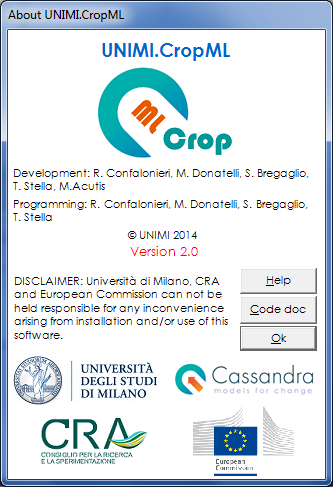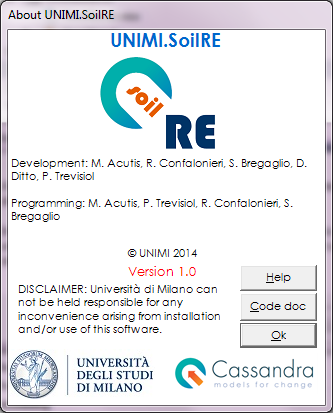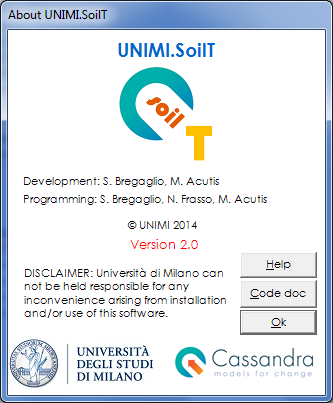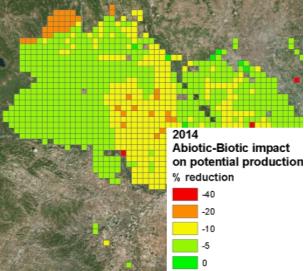Improving cereal yield forecast in Europe - the impact of weather extremes.
 |
2017 - European Journal of Agronomy, 89, 97-106 |
 |
Pagani, V., Guarneri, T., Fumagalli, D., Movedi, E., Testi, L., Klein, T., Calanca, P., Villalobos, F., Lopez-Bernal, A., Niemeyer, S., Bellocchi, G., Confalonieri, R. |
Abstract:
The impact of extreme events (such as prolonged droughts, heat waves, cold shocks and frost) is poorly represented by most of the existing yield forecasting systems. Two new model-based approaches that account for the impact of extreme weather events on crop production are presented as a way to improve yield forecasts, both based on the Crop Growth Monitoring System (CGMS) of the European Commission. A first approach includes simple relations – consistent with the degree of complexity of the most generic crop simulators – to explicitly model the impact of these events on leaf development and yield formation. A second approach is a hybrid system which adds selected agro-climatic indicators (accounting for drought and cold/heat stress) to the previous one. The new proposed methods, together with the CGMS-standard approach and a system exclusively based on selected agro-climatic indicators, were evaluated in a comparative fashion for their forecasting reliability. The four systems were assessed for the main micro- and macro-thermal cereal crops grown in highly productive European countries. The workflow included the statistical post-processing of model outputs aggregated at national level with historical series (1995–2013) of official yields, followed by a cross-validation for forecasting events triggered at flowering, maturity and at an intermediate stage. With the system based on agro-climatic indicators, satisfactory performances were limited to microthermal crops grown in Mediterranean environments (i.e. crop production systems mainly driven by rainfall distribution). Compared to CGMS-standard system, the newly proposed approaches increased the forecasting reliability in 94% of the combinations crop × country × forecasting moment. In particular, the explicit simulation of the impact of extreme events explained a large part of the inter-annual variability (up to +44% for spring barley in Poland), while the addition of agroclimatic indicators to the workflow mostly added accuracy to an already satisfactory forecasting system.
 |
Keywords: Agro-climatic indicators, CGMS, crop model, extreme weather events, WOFOST, yield forecasting |
 |
DOI: 10.1016/j.eja.2017.06.010 |
 |
AbioticDamage A software component for the impact of abiotic damages on crop productions |
 |
CropML CropML is a framework-independent component implementing a variety of approaches for crop growth |
 |
SoilRE SoilRE is a software component for runoff volume, soil eroded and intercepted water |
 |
SoilT A software component implementing different approaches for soil temperature simulation |
 |
SoilW A software library implementing different approaches for soil hydrology simulation |
- Comparison of three calibration methods for modeling rice phenology
- A simple pipeline for the assessment of legacy soil datasets: An example and test with soil organic carbon from a highly variable area.
- A high-resolution, integrated system for rice yield forecasting at district level.
- Downscaling rice yield simulation at sub-field scale using remotely sensed LAI data.
- Analysis and modelling of processes involved with salt tolerance and rice.
- Estimating crop nutritional status using smart apps to support nitrogen fertilization. A case study on paddy rice.
- Development of generic crop models for simulation of multi-species plant communities in mown grasslands.
- Quantifying uncertainty due to stochastic weather generators in climate change impact studies
- Predicting rice blast disease: machine learning versus process-based models
- Boundaries and perspectives from a multi-model study on rice grain quality in Northern Italy.






